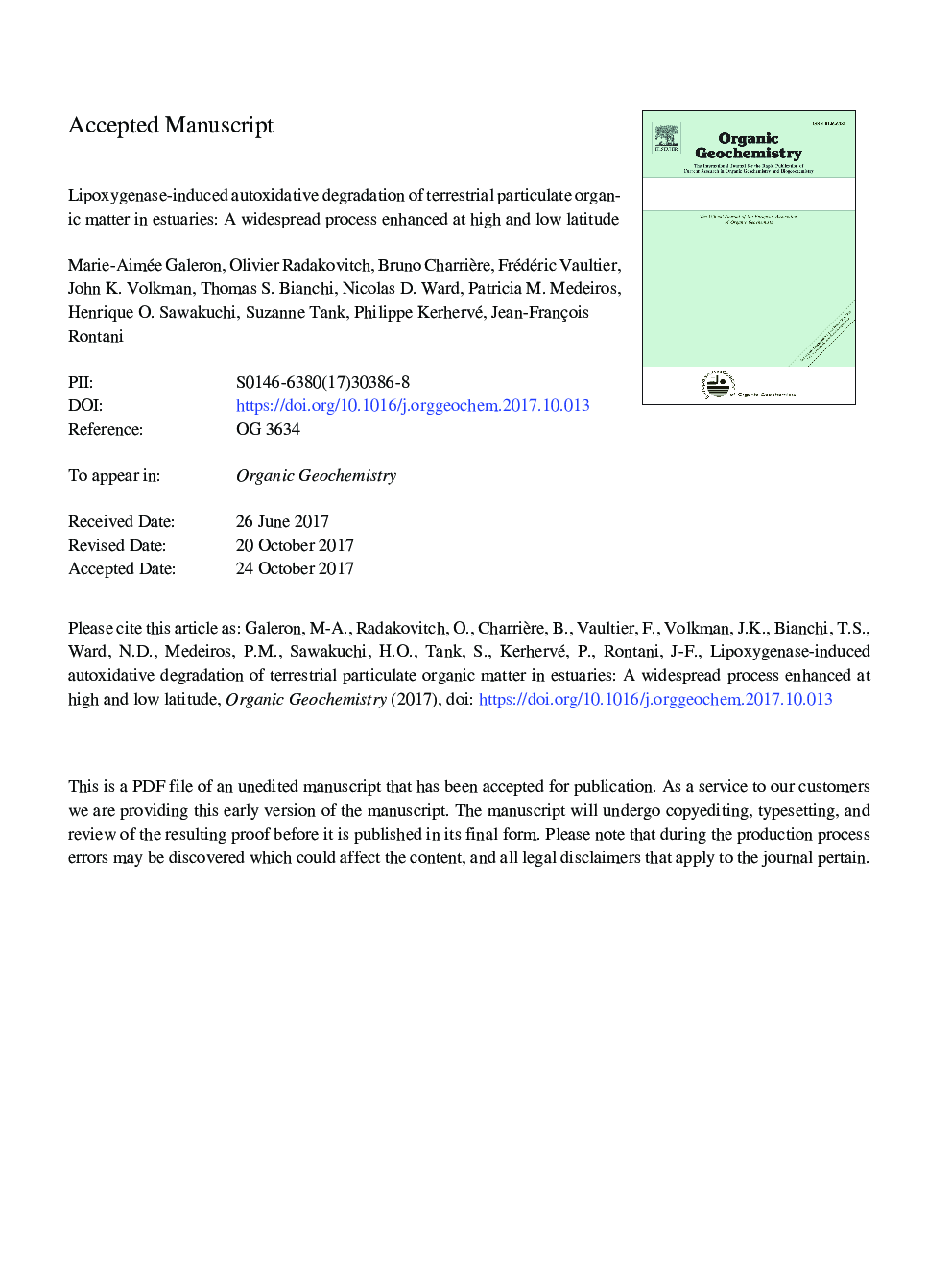| Article ID | Journal | Published Year | Pages | File Type |
|---|---|---|---|---|
| 7817083 | Organic Geochemistry | 2018 | 54 Pages |
Abstract
There exists a substantial amount of research on abiotic (e.g. photochemical) degradation pertaining to organic matter (OM) in the marine realm. While recent research has shown its importance in the degradation of terrestrial particulate OM (TPOM), the mechanisms involved in the induction of autoxidation in estuaries remain unclear. In this study, we propose for the first time the involvement of lipoxygenase (LOX) activity in the induction of autoxidation in mixed waters. The observation of unusual profiles of palmitoleic acid oxidation products and the presence of jasmonic acid in suspended particulate matter (SPM) collected close to the Rhône River, as well as in samples from the Mackenzie and Amazon rivers, is attributed to strong LOX activity. We show the role played by salinity in the induction of this LOX activity and provide an explanation for the differences in estuarine autoxidation level. At high latitude, lower temperatures and irradiance favor photooxidative damage to higher plant debris and, consequently, hydroperoxide production. High hydroperoxide content strongly contributes to LOX activation in mixed waters. The high resulting LOX activity enhances alkoxyl radical production and thus autoxidation. On the contrary, at low latitude, photooxidative effects are limited, and riverine autoxidation is favored. The higher hydroperoxide content of TPOM may, as a consequence, thereby also contribute to a high level of LOX activity and autoxidation in estuaries. In temperate zones, land and riverine photooxidative and autoxidative damage is limited, unlike estuaries where we observed significant LOX-induced and autoxidative damage.
Related Topics
Physical Sciences and Engineering
Chemistry
Organic Chemistry
Authors
Marie-Aimée Galeron, Olivier Radakovitch, Bruno Charrière, Frédéric Vaultier, John K. Volkman, Thomas S. Bianchi, Nicolas D. Ward, Patricia M. Medeiros, Henrique O. Sawakuchi, Suzanne Tank, Philippe Kerhervé, Jean-François Rontani,
